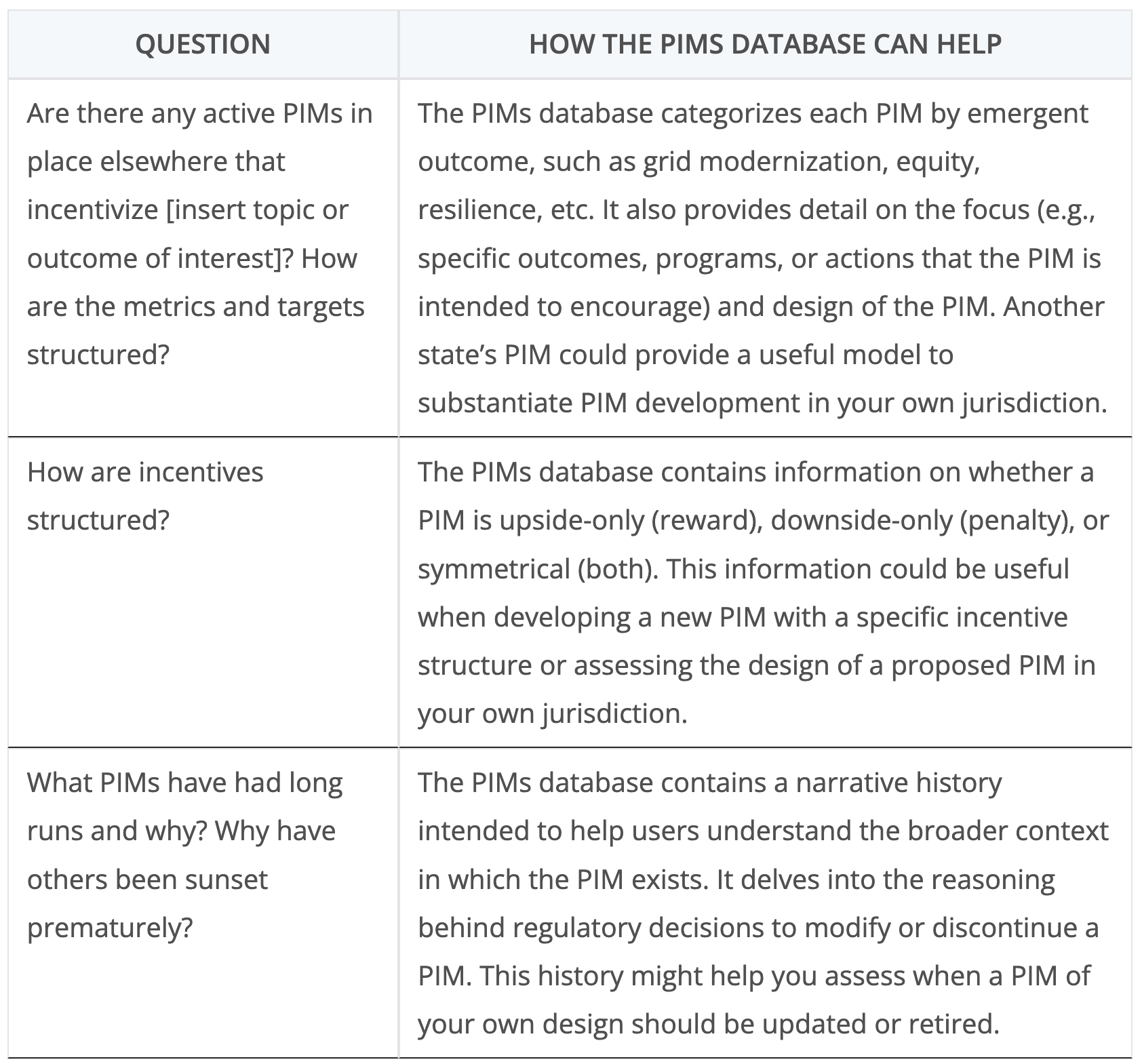Sign up for daily news updates from CleanTechnica on email. Or follow us on Google News!
RMI’s new PIMs database helps you find regulatory tools to meet the demands of a 21st-century grid.
Utilities, regulators, and advocates alike are grappling with the evolving needs of a 21st-century grid: renewables face prolonged delays in coming online, jeopardizing state, community and corporate climate goals and escalating costs. The increasing frequency of extreme weather events on the grid risks compromising system reliability and resilience. And simultaneously, the energy affordability crisis — with its attendant increase in shutoffs — is placing growing pressure on utilities and regulators alike to deliver on equity and affordability at a time when mounting investment to facilitate decarbonization is needed. But utility business models are frequently misaligned with the most affordable, rapid paths to a managed and just transition.
In response to these challenges, state regulators are adopting performance incentive mechanisms (PIMs) — regulatory tools that tie a portion of utilities’ earnings to the utilities’ performance on desired regulatory outcomes. PIMs are designed to motivate improved utility performance in specific areas that may not be adequately encouraged by traditional cost-of-service regulatory frameworks. To help people learn about emergent PIMs across the country, RMI has launched a new PIMs Database.
The Importance of PIMs
Because the traditional business model biases utilities to invest in large capital projects such as power plants, more cost-effective solutions such as virtual power plants and energy efficiency are frequently overlooked. This bias can work at cross purposes to the objectives and goals of states, customers, and communities. Additionally, utilities are compensated for spending on what is “needed” to provide service to customers rather than the quality of service and their performance on policy goals. PIMs offer an opportunity to address both issues by tying utility earnings to performance and focusing utility attention on outcomes that require innovation and guidance from regulators on what success looks like.
Emergent PIMs include those that incentivize accelerated renewable deployment, faster interconnection times, and distributed energy resource utilization to provide grid services during times of stress. They can also incentivize equity-focused outcomes such as reduced shutoff rates and improved reliability for low-income and underserved communities. RMI’s new database is a convenient source of information on emergent PIMs across the country that are intended to align utility behavior with the public interest.
What’s in the PIMs Database?
Despite the growing importance of PIMs, information about these mechanisms has been sparse and challenging to track down. Until now, PIM information has been buried within the relatively inaccessible document management systems of regulatory commissions nationwide. Furthermore, there is relatively little existing research on the efficacy of PIMs on emergent topics. Together, this makes it difficult for decision makers and stakeholders to develop and assess emergent PIM designs for their jurisdictions.
RMI’s new PIMs Database aggregates information on PIMs across the country to support the design and proliferation of effective PIMs. Absent such information, states looking to design PIMs are forced to repeat the same investigations without the benefit of each other’s experience.
While the PIMs Database currently features information on PIM designs, the resource will expand over time to include information on utility performance as well. This will include information to help discern whether utilities are meeting their PIM performance targets, and the financial incentive they receive. By compiling information on both PIM design and performance, the database will support stakeholders in understanding not only the scope of potential PIM designs, but also their relative success in influencing utility behavior toward improved outcomes.
What can you do with the PIMs Database?
The PIMs Database can support regulators, utilities, and advocates in referencing and analyzing PIM designs for their jurisdictions in a variety of venues. Here are a few examples of questions the database is designed to answer:
The PIMs Database is a Work in Constant Progress — Sign Up for Updates and Insights
This isn’t the end of the road. The database will be updated annually for each state as new PIMs are adopted and utility performance data becomes available. RMI will use the database to support insights that can inform the uptake and effective design of PIMs that align utility behaviors with emergent outcomes in the public interest. We also look forward to input from users to make the database most helpful.
For those interested in staying up to date on ongoing PIMs Database developments and insights, consider signing up to receive RMI’s Policy Newsletter on the PIMs Database webpage. PIMs updates will feature developments in the field and insights from the database, such as:
-
- What’s New: PIMs and performance data that have been added to the database since the last quarter
- PIM of the Month: spotlighting one notable PIM in the database
- How I Built This PIM: bite-sized insights and lessons learned from PIM design, evaluation and implementation
RMI’s PIMs Database will be an evolving and expanding source of information on PIMs design, utility performance, and overall efficacy. We hope you find it to be a convenient source of information and inspiration as you consider the design and implementation of PIMs in your own jurisdictions.
© 2023 Rocky Mountain Institute. Published with permission. Originally posted on RMI.
Have a tip for CleanTechnica? Want to advertise? Want to suggest a guest for our CleanTech Talk podcast? Contact us here.
Our Latest EVObsession Video
I don’t like paywalls. You don’t like paywalls. Who likes paywalls? Here at CleanTechnica, we implemented a limited paywall for a while, but it always felt wrong — and it was always tough to decide what we should put behind there. In theory, your most exclusive and best content goes behind a paywall. But then fewer people read it!! So, we’ve decided to completely nix paywalls here at CleanTechnica. But…
Thank you!
CleanTechnica uses affiliate links. See our policy here.





